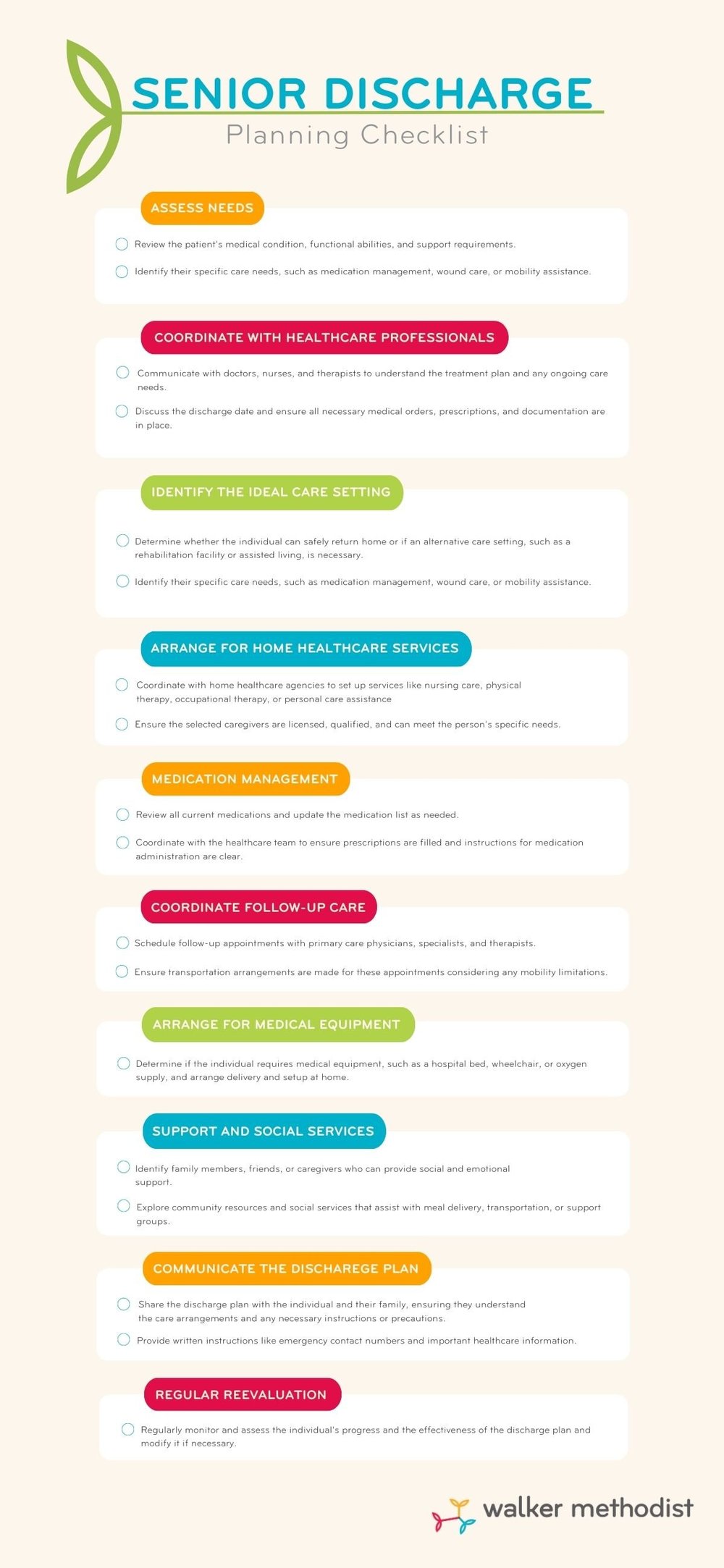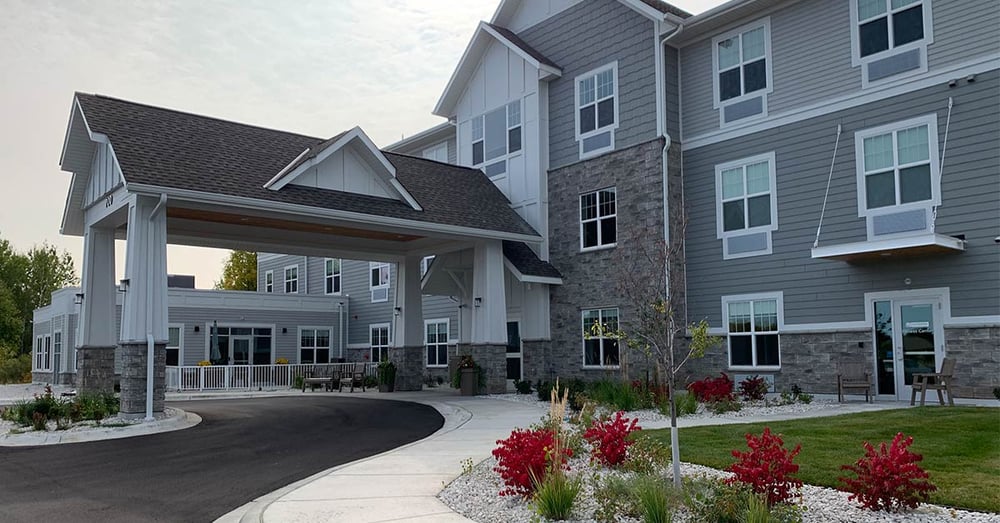Senior Care Checklist: Discharge Planning From Hospital to Home
Sarah Benbow, Executive Director of Communications | Sep 25, 2023

As a discharge planner, caregiver, and advocate for older adults, matching your patients with the proper care solution can be challenging. When an individual needs to transition — whether it is to short-term care, rehabilitation programs, or long-term care — consider the following elements. Paying particular attention to the items listed below can help ensure the seniors you work with feel informed and confident throughout the process.
What Is Discharge Planning?

Senior discharge planning involves coordinating a safe and smooth transition from a hospital or other healthcare facility to an individual's home or appropriate care setting. It's a comprehensive plan accounting for one's medical needs, functional abilities, social support, and available resources during recovery.
A typical discharge plan for older adults aims to ensure they receive the necessary care and support after leaving the hospital by arranging for things like:
- Home healthcare services
- Rehabilitation programs
- Medication management
- Medical equipment
- Follow-up appointments with healthcare providers
Discharge Planning Checklist
Senior Care Options for After Discharge

Before discussing community options, it is vital to communicate what level of care is needed clearly. Beyond questions about medication, treatment plans, and current mobility, be sure to discuss equipment needs, mental health, health history, and future needs. These conversations help your patient understand the many variables at play.
When you’re ready to look at care options, your patient's needs will determine the types of senior living communities available. Here are a few examples:
- Independent Living: This type of senior community provides maintenance-free living in comfortable apartments and homes in a more active, social, communal residency.
- Assisted Living: This type of living supports older adults as they maintain their lifestyle while offering health and medical assistance.
- Long-Term Care: This type of living allows older adults to get comfortable in a personal setting and enjoy amenities in a communal residency, all while receiving 24/7 care from nursing staff.
- Enhanced Assisted Living (Care Suites): This model offers a higher level of attention from a dedicated health care professional who can respond quickly to the needs of a small group of residents.
- Memory Care: This type of living gives older adults a safe yet stimulating environment designed around their specific needs.
- Transitional Care: This arrangement is excellent for those seeking short-term health care and rehab services, allowing individuals to regain health and build strength.
- Rehabilitation: This type of living provides physical, occupational, and speech therapies.
Providing accurate, realistic options is most successful when your patient is well-acquainted with how their needs and care options are related.
Preparing for a Smooth Transition
Being honest, realistic, and open with your patient about the best options is key. The transition process will move more smoothly by paying particular attention to the following:
LOCATION
Discuss the area or neighborhoods surrounding the senior living communities you're considering. Is staying in a familiar suburb important? Is being closer to a family member, child, or friend a top priority? While the level of care needed may narrow location options, it might not be as important to your patient as where amenities and resources like doctors, churches, family, and friends are to their potential new home.
SOCIAL LIFE
When discharge planning for seniors, consider what is important to them in a residential community and what they enjoy doing with others. For instance, if gardening is a big part of your patient's life, focus on finding communities to match. Many communities offer a variety of amenities, classes, outings, and activities.
FAMILY INPUT
As you likely know, transitioning an older adult to senior living can be stressful for the patient's family. As you present your findings to those closest to your patient, focus on balancing your patient's preferences with their needs. While you likely do this naturally as part of your process, expressing it outwardly will ensure the family knows you're keeping their loved one's best interest as a primary focus.
QUESTIONS
To provide your patient and their family or loved ones with as much support and helpful information as possible, prepare some basic questions they may have, along with answers to them. Questions could include:
- What is the story of the recommended community, and what are some details about their staff?
- How long can the older individual stay in the recommended community?
- Is the location of the community convenient, safe, and well-kept?
- Who do we speak to within the community for other questions and concerns?
Discussing the items listed above with your patient and their family will show them you know everyone's needs as you search for the right senior care option.
Transitional Care in Minnesota
When people suffer an acute illness, injury, or undergo surgery to repair something, they may not be ready to return home immediately. Transitional care is the necessary support and ongoing therapy option for recovery to bridge the gap between hospital and home.
Please talk with a Senior Care Advisor to learn more about the several Walker Methodist communities, our various care programs, and what suits your needs.


